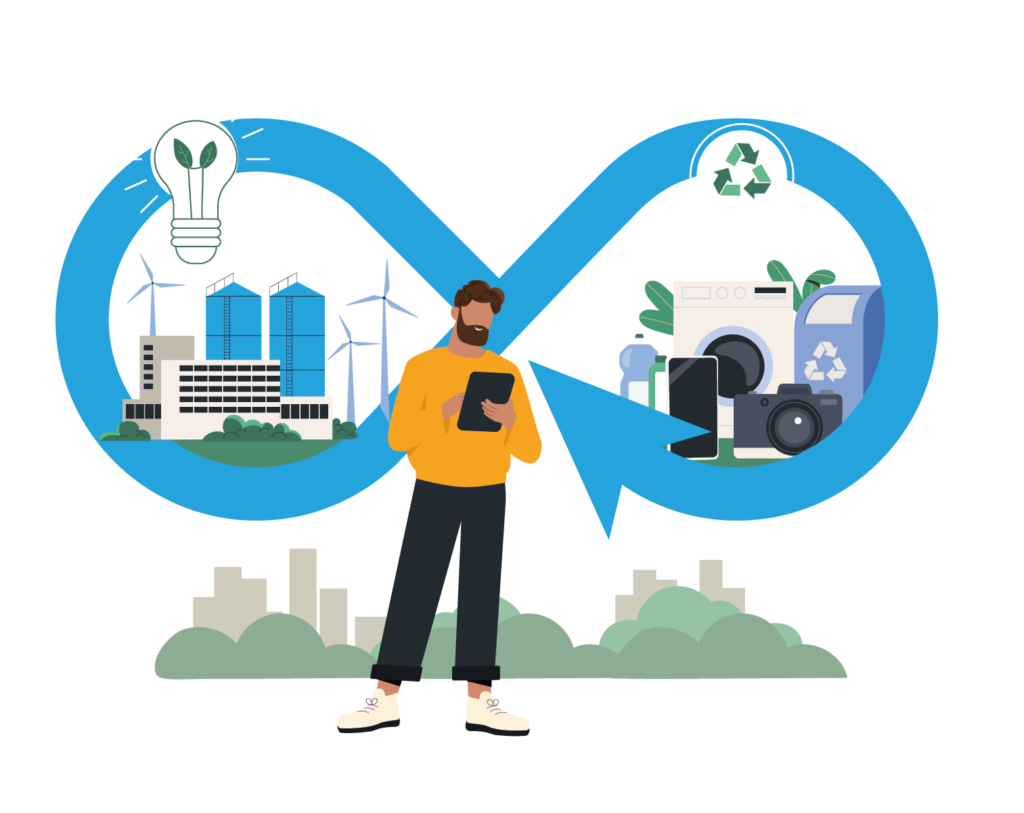What are green leases?
In the pursuit of sustainable practices and the race towards achieving net-zero targets, an instrumental tool has emerged in the real estate landscape: green leases. These contracts go beyond the conventional lease agreement, signifying a joint commitment by both landlords and tenants to operate a building in an environmentally conscious manner.
Energy Management Software
Gain total visibility and take full control of your energy consumption.

Primarily associated with commercial properties, green leases are a forward-thinking response to escalating environmental concerns. These leases necessitate a dedicated pledge from both parties involved – the landlord and the tenant – to administer the property in a sustainable fashion. The shared objective is to reduce the environmental footprint, enhancing energy efficiency, cutting down emissions and managing resources and waste effectively.
Why are green leases important?
Green leases are an innovative leasing approach that promotes eco-friendly practices in real estate. They achieve this in several ways:
Addressing energy efficiency
One of the pivotal roles of green leases is their contribution to the enhancement of energy efficiency within properties. By instating clauses that enforce energy-efficient practices, these leases act as catalysts for a more sustainable operation.
Compliance with standards
Green leases are aligned with various government requirements and standards, such as the National Green Leasing Policy. This ensures that properties meet the necessary environmental benchmarks.
Meeting environmental targets
In an era where ESG in property management and the race towards achieving Net Zero targets is a board-level concern, green leases emerge as a powerful tool to steer real estate practices towards a more sustainable future.
Satisfying market demands
As the demand for eco-friendly and energy-efficient properties continues to surge, green leases are becoming increasingly attractive to both landlords and tenants who want to stay up to date with sustainability trends. These leases hold the promise of not only reducing the environmental footprint but also the operational costs for the tenant.
The challenges of green leases
While the potential benefits of green leases are immense, they haven’t yet attained widespread adoption. There are several reasons for this:
Lack of legal mandate
At present, green leases are not legally mandated, leaving them in the realm of optional commitments for landlords and tenants.
Financial considerations
Implementing green leases requires substantial investment from both parties. Landlords might need to undertake significant property alterations and repairs, while tenants on shorter leases may find it challenging to justify the costs associated with green lease provisions.
Limited awareness and experience
A lack of widespread knowledge and experience among legal professionals and estate agents contributes to the hesitation towards green leases. Concerns over potential delays in sales and completion processes further exacerbate this reluctance.
Implementing green leases: A collaborative endeavour
To adopt green leases, landlords and tenants must work in tandem. The provisions can be incorporated into new leases or added to existing agreements through a memorandum of understanding. Both parties need to establish tools and methods for monitoring the effectiveness of the changes, ensuring that progress is being made.
Ensuring green lease success
Green lease provisions can be inserted into new leases or incorporated into existing ones by way of a memorandum of understanding. However, they require a high level of collaboration between the landlord and tenant to ensure that they work together to fulfil the obligations set out.
To achieve the best results, it’s important that expectations of both parties are set out clearly and that commitments are backed up by concrete measures and KPI’s to allow for progress to be monitored.
As well as ensuring the lease wording is right, it’s also vital that properties are equipped with the technology to measure and monitor progress, from accurate utility metering to IoT sensors and an energy management system to collate data and provide analysis and reporting.
AI-powered lease extraction technology can also help pull the relevant information from various sources such as utility bills to provide accurate and transparent data for reporting purposes. Thus, technology not only allows performance to be measured, but also provides the data insights to allow for effective optimisation, vastly increasing the likelihood that green leases will be successful.
Foster sustainable growth with MRI Software
As environmental concerns continue to escalate, green leases offer a promising pathway to a more sustainable future in real estate. While their widespread adoption may take time, their potential to revolutionise the industry is undeniable. However, it’s vital that green leases are built on a solid foundation of data, backed up with cutting-edge technology, to ensure success for both tenants and landlords.
To find out more about how MRI Software can support your property organisation to achieve its ESG goals, contact us today.
Strategies for success: Achieving FM and energy team synergy
Your journey to achieving true FM & energy team synergy begins here. 3 in 4 senior decision-makers in large businesses across the UK consider energy their #1 risk in 2023, according to the latest ‘Drivers of Change’ research from Prot…

